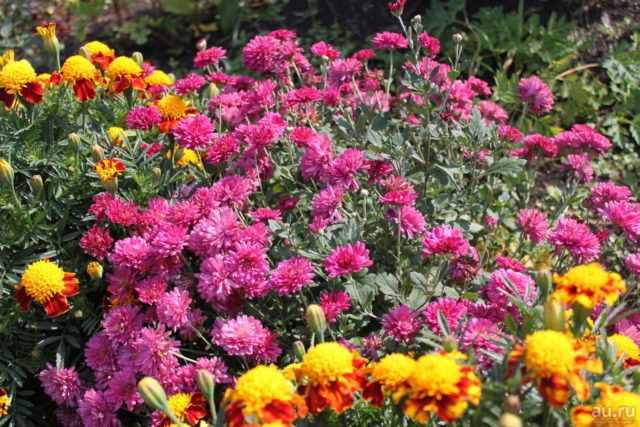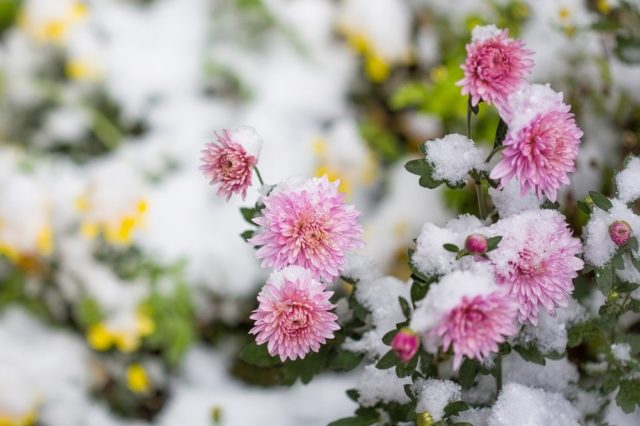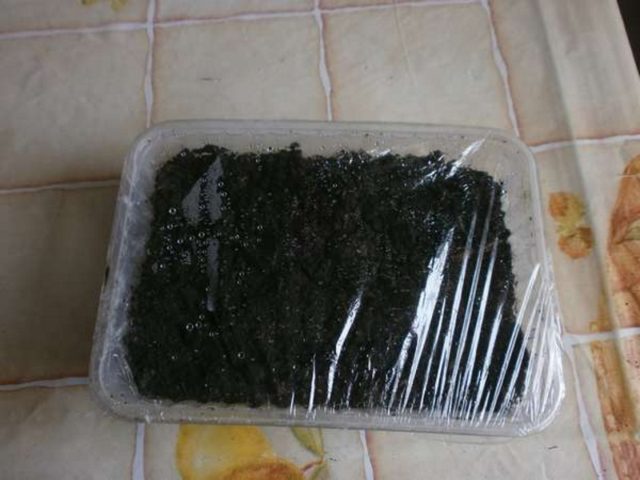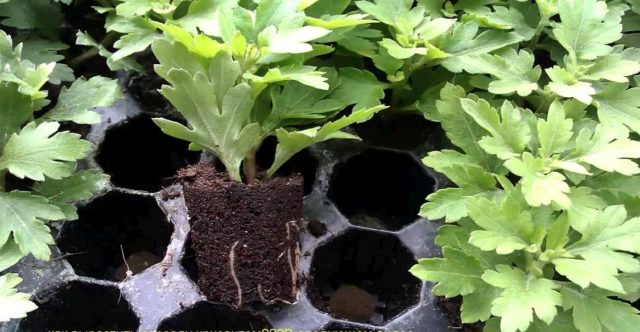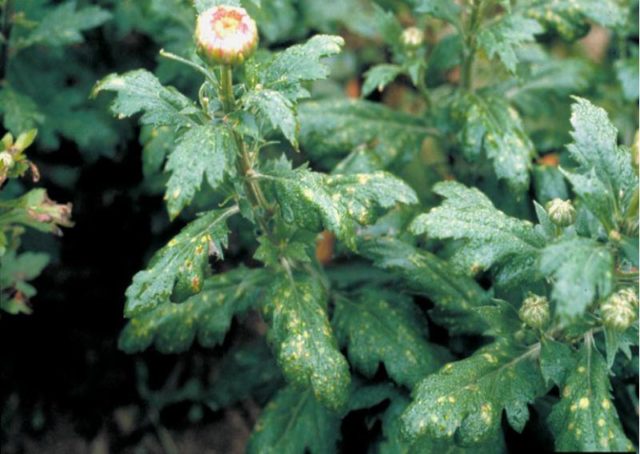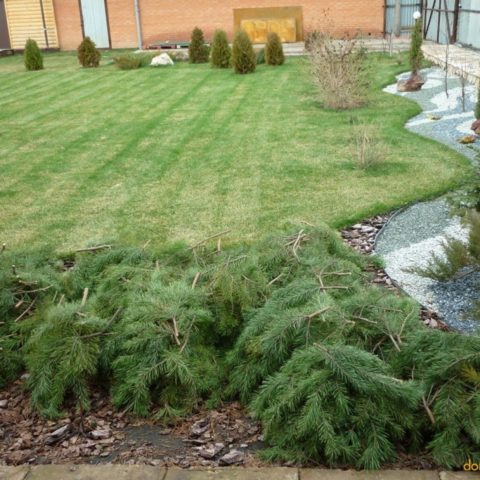Content
Growing Korean chrysanthemums from seeds is one way of propagating these perennial flowers. However, it is not the main one, since in this case their varietal characteristics are not preserved. For reproduction of the Korean chrysanthemum, other methods are often used, for example, dividing a bush or a vegetative method.
A brief description of the Korean chrysanthemum
Korean chrysanthemums are perennial flowers, most often grown for decorative purposes. There are many varieties and colors that are widely used in landscape design. Chrysanthemum is used to decorate flower beds, squares, alleys, create flower arrangements. Unlike garden chrysanthemums, which are formed into one stem, the Korean species is grown in its natural form, that is, in the form of a compact or spreading bush consisting of erect stems.
Korean chrysanthemum has a second name - Dubok. She received it for the similarity of flower leaves with oak leaves. To give a decorative look, individual fast-growing shoots are pinched. This plant has quite a few varieties. They differ from each other in the following ways:
- The height of the bush. They are subdivided into undersized (up to 30 cm in height), medium-sized (up to 50 cm) and tall (up to 1 m).
- The size of the inflorescence. Small-flowered have a diameter of up to 0.1 m, large-flowered - over 0.1 m.
- The type of flower petals. Distinguish between reed and tubular.
- Inflorescence type. Perennial Korean chrysanthemums can be grown from seeds with spherical, hemispherical, flat, double and semi-double, pompom, radial and anemone flowers.
Korean chrysanthemum is frost-resistant, therefore it is grown by gardeners in various regions. Caring for these flowers is not difficult and is within the power of the most inexperienced florist. The Korean chrysanthemum blooms quite late, in September, so many call it the queen of autumn.
Breeding features of Korean chrysanthemums
Breeding Korean chrysanthemums is quite simple. It can be done:
- vegetatively (cuttings);
- dividing the bush;
- seeds.
Since the Korean chrysanthemum forms numerous basal shoots, it is by dividing the bush that it is most often propagated.
Seeds
The seed method of reproduction of the Korean chrysanthemum is used relatively infrequently, since it does not preserve the varietal characteristics of the plant. Seeds are collected from faded inflorescences and left to ripen in a room with a temperature of + 16-20 ° C, and then stored at + 2-6 ° C. Seeds are planted indoors in February.
As a rule, 3 seeds are sown in each hole. After the sprouts grow to 10–12 cm, culling is performed, leaving the strongest sprout.
Cuttings
When propagated by cuttings, all varietal characteristics of the Korean chrysanthemum are preserved. Young shoots no more than 8 cm long are used as cuttings. They are harvested in September.During the winter, they will develop a powerful root system and will be ready to be transplanted into open ground.
Before planting, the cut off place of the cuttings is kept for several hours in a solution of a growth stimulant, and then placed in boxes with moistened sand. They need to be placed under a film, ventilated and moistened regularly. In the spring, the grown cuttings are planted in a permanent place.
By dividing the bush
For reproduction of Korean chrysanthemum by dividing the bush, numerous root shoots are used, separating 3 shoots from the side along with part of the mother root. This procedure is done in late spring, after the appearance of side shoots, or in the fall, in this case, the planting is covered for the winter with mulch or agrofibre. This method of reproduction provides survival rate close to 100%.
Planting and caring for a Korean chrysanthemum
Spring planting of cuttings is carried out in a permanent place when the soil warms up and the risk of recurrent frost is minimized. You can grow chrysanthemums in one place for 3-5 years, you should pay attention to this when choosing a place.
Terms of planting works
Before planting in open ground, containers with cuttings should be regularly taken out into the street, making them a kind of hardening and accustoming them to the cold. Their exposure time in the open air must be gradually increased. As a rule, planting cuttings in open ground in a permanent growing place is done in late May or early June.
In autumn, planting of Korean chrysanthemums can be carried out until mid-September. This will allow the bush to take root in a new place and calmly survive the winter.
Site selection and soil preparation
The Korean chrysanthemum is a light-loving plant. When grown in the shade, the stems become thinner, elongated, and the inflorescences become dull and small. The place for these flowers should be bright and sunny, while it should be protected from cold drafts. The soil needs to be loose and fertile, with a neutral acidity level. Wetlands or places with regular stagnation of water are not suitable for cultivation.
Algorithm for planting flowers
Planting cuttings or cuttings can be carried out in individual holes or trenches with a depth of about 0.3 m.When planting low-growing varieties, use a scheme of 30x30 cm, taller ones - 40x40 or 50x50 cm. 0.5 tbsp. spoons under each bush. After planting, the bushes are watered abundantly.
A prerequisite for growing is the pinching of the plant. It consists in the fact that after planting, its growth point is cut off. This will allow the plant to direct all its forces to the formation of a full-fledged root system. It is advisable to cover the planted seedlings with a covering material to create a microclimate. After signs of rooting appear, the shelter can be removed.
Growing Korean chrysanthemum
To successfully grow Korean chrysanthemum, you need to follow these rules:
- After the opening of the 8th leaf, the main and lateral shoots are pinched. Such a measure contributes to the strengthening of branching, the bush will turn out to be more lush. If the variety is large-flowered, the side shoots should be removed completely.
- Plants need to be watered often, but water stagnation in the roots should not be allowed. For irrigation, it is preferable to use rainwater, adding a few drops of ammonia to it. Watering should be carried out strictly at the root, water ingress on leaves and flowers is not allowed.
- It is advisable to mulch the soil under the flowers with rotted manure or peat. In the absence of mulch, it is necessary to regularly weed and loosen the soil.
- Plant feeding is done about a month before flowering, in August. To do this, you can use any complex fertilizers containing potassium and phosphorus.
- After flowering, the bushes are cut at a height of 15–20 cm, bent to the ground and covered with a layer of mulch.
The cultivation of perennial Korean chrysanthemums is not difficult, therefore it is recommended even for novice gardeners.
Growing Korean Chrysanthemum Seed Mix
Quite a few of the seeds of Korean chrysanthemums are sold in mixtures. This is very convenient for those who do not like to make flower arrangements themselves and want to immediately see a colorful flower carpet on the flower bed. Here are some of the famous Korean chrysanthemum blends:
- Korean mix. Bushes of medium height. Inflorescences from double to simple, a wide variety of flowers. Can be grown both outdoors and in pots.
- Velvet autumn. It has large double inflorescences of various colors and shades. They stand well when cut.
- Stars of the galaxy. Blooms in large double inflorescences until frost. Grown in containers or flowerpots.
You can also make up the mixture yourself.
Seed sowing dates
The Korean chrysanthemum has a fairly long growing season. It takes 6 months from the moment of germination to the beginning of flowering, so the seeds are planted for seedlings in February.
Preparation of containers and soil
Various boxes and containers can be used for growing seedlings. At the bottom, you need to pour small pebbles for drainage, and then a layer of nutrient soil, consisting of turf soil, river sand and humus, mixed in a ratio of 2: 1: 1.
Sowing seeds for seedlings
Seeds are sown to a depth of 3-5 mm. The soil is moistened and the container is covered with glass or plastic wrap. The temperature in the room with containers must be maintained within + 18-25 ° С.
You can use another method of disembarkation. In this case, river sand can not be added to the composition of the nutrient soil, but used as a top layer. The seeds are simply laid out on the surface, and a layer of sand 1 cm thick is poured on top. After that, the contents of the container are moistened and placed under a shelter.
Transplanting flower seedlings into open ground
As soon as the first seedlings appear in the containers, the shelter is removed. This usually takes about 2 weeks. After the appearance of 2-3 leaves, the seedlings dive, distributing them for further cultivation in separate pots or other containers. So that the seedlings do not stretch, it is advisable to highlight it with a phytolamp, since the length of daylight hours for its normal growth is still not enough.
In May, when the ambient temperature rises to + 15 ° C, the grown seedlings are transplanted to a permanent place in the open ground. Landing is carried out in compliance with the required intervals at a distance of at least 20 cm from each other. It is advisable to leave at least 30 cm between adjacent rows. When growing high varieties of Korean chrysanthemums with large inflorescences, these intervals can be doubled.
Diseases and pests: methods of control and prevention
Korean chrysanthemums rarely get sick. The appearance of any disease can be associated either with unfavorable weather conditions, or with insufficient care during its cultivation. Among the most common diseases appearing on these perennials, the following fungal and viral diseases can be noted:
- gray rot;
- powdery mildew;
- dwarfism;
- mosaic;
- rust;
- aspermia.
Some of these diseases (dwarfism, mosaic, aspermia) do not respond to treatment, so the affected plants are simply dug up and burned. Fight against fungal diseases by spraying plants with fungicides, for example, copper oxychloride or Bordeaux mixture.
Of the pests, aphids appear most often on the Korean chrysanthemum. To combat it, the drug Actellik is used. In addition, slugs that eat leaves and nematodes that eat plant roots can cause trouble. To destroy slugs, ulicide or metaldehyde is used, the nematode is fought with the help of the Dekaris drug.
To prevent the appearance of diseases and pests, it is necessary to prevent overgrowing of flower beds. weeds, ensure constant ventilation of the soil and root zone.
How to keep Korean chrysanthemums in winter
Most varieties of Korean chrysanthemums have sufficient winter hardiness and tolerate winters calmly. It is enough just to cut them off and cover them, for example, with fallen leaves or cover them with a layer of spruce branches. However, some varieties require additional cover. To protect such bushes, agrofibre is additionally used, then covered with a layer of snow.
Conclusion
Growing Korean chrysanthemums from seeds is not particularly difficult. Using ready-made mixtures, you can easily grow such perennials, pleasing the eye with their flowering until the very frost. And if you use other methods of reproduction, then you can fully preserve all varietal characteristics.
